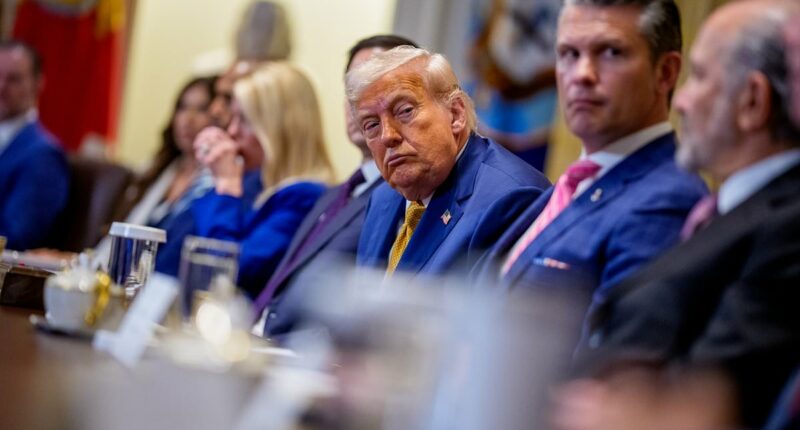Share this @internewscast.com
President Donald Trump once again set off a market scramble when he said he was imposing a 50 percent tariff on copper.
The comment sent copper prices suddenly skyrocketing.
Copper futures soared 17 percent – the highest rise during a day since 1988 – before coming down.
According to a report by CNBC, Americans are currently paying 138 percent more than the global standard for copper. This comes as a surprise considering there is an ample supply of the metal, which is extensively used in manufacturing and technology.
Experts warn that these price increases could potentially translate into higher expenses for U.S. consumers on various items, including refrigerators, electric cars, and air conditioning units.
The costs of copper also affect the overall expenses for electricity, as it is a critical component in the electrical grid given its effectiveness as a conductor.
Analysts are predicting the cost hike caused by the 50 percent tariff, essentially imposing a tax as importers bring copper into the country, to have widespread impacts on the economy.
Commerce Secretary Howard Lutnick told CNBC the duties would get implemented at ‘the end of July, maybe August 1,’ which would align them with the delayed date for Trump’s ‘reciprocal tariffs.’
Trump has been releasing a series of letters this week, timed to an earlier July 9th deadline. Those letters have sent nations scrambling to negotiate. Some, like South Korea, impose close to zero tariffs on U.S. products, but enjoy a trade surplus with the U.S. thanks to American purchases of cars, consumer products, and other materials.

The price of copper suddenly spiked after President Donald Trump announced a new 50 percent tariff on imports
Trump dropped the copper bombshell during Tuesday’s cabinet meeting, where he spoke for more than an hour before TV cameras and answered questions.
‘So we’re going to be announcing pharmaceuticals, [computer] chips and various couple of other things, you know, big ones,’ Trump said.
‘We did steel as you know – they’re 50 percent. We did aluminum, 50 percent. Lumber just came out … And we did cars, cars. And now today we’re doing copper. I believe the tariff on copper, we’re going to make it 50 percent,’ Trump said.
U.S. copper futures immediately jumped more than 10 percent after Trump made his announcement.
Copper is used in electric cars, high-tech military equipment and hardware, the nation’s power grid, plumbing materials, electrical wiring, circuit boards, electric motors, renewable energy products, housing and architecture uses, and marine products.
A big tariff on it, depending on how or whether Trump would impose any delays or careouts, could impact costs throughout the US economy.
The U.S. produces about half the refined copper it uses each year – meaning the other half comes from overseas.
According to the U.S. Geological Service, the U.S. imported 90 percent of its copper from Chile, Canada, and Peru, Reuters reported.

Trump’s tariff hits a product used in U.S. electronics, electric cars, military equipment, and the power grid

The market reaction was swift after Trump announced the tariff

The U.S. gets its copper from Canada, Chile, and Peru, all traditional allies
Experts say it could take years to boost domestic production to meet the demand, meaning Americans would face higher costs in the interim.
Trump has been sparring with Canada over trade since taking office, accusing it of ripping off the United States, and saying: ‘ We don’t need their cars. We don’t need their lumber … We don’t need their energy. We don’t need anything.’
Trump has said tariffs on pharmaceuticals could hit 200 percent.
His surprise copper tariff comment came during a week when the end of his tariff pause was already expected to hit a series of U.S. products, from Spanish ham to Dominican cigars and Japanese cars.
The overall market response to Trump’s tariffs this week has been muted, even as he fired off letters to 14 nations stating what tariff they would pay August 1, essentially conceding there was no individual trade deal yet in each case.
That has prompted speculation that markets are pricing in a concept that Trump has bristled at: the ‘Trump Always Chickens Out’ trade, know as TACO, expecting he would delay or defer threatened tariffs due to the impact on the economy.
















